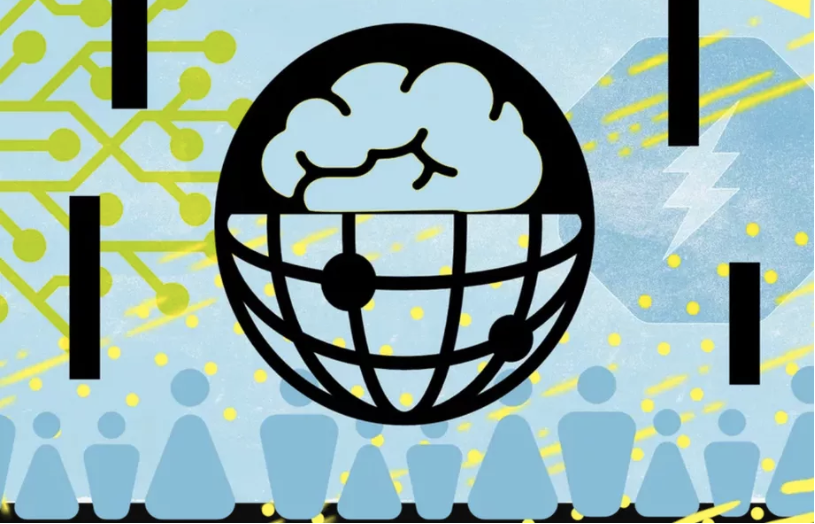“Disruption is everywhere. It interrupts and destabilizes our systems and norms, impacting individuals, organizations, and indeed, all of our society. We face cultural, environmental, and technological disruptions on a daily basis. Rarely do we recognize them before they slap us in the face, either because we try to ignore them, or because we simply don’t see them coming until it’s too late.”
When I wrote this for my book The Renaissance Campaign in 2019, I couldn’t have predicted the next unavoidable disruption would be a global pandemic. If people weren’t paying attention to disruption before, they are now. We no longer have the option of ignoring it because it’s already slapped us all in the face. As in the book though, there’s an antidote to societal disruption—to the far-reaching consequences this virus will have—and it lies in the collaboration between artists and scientists.
But we need to act now.
This is the greatest global disruption we’ve seen since World War II. The challenges with this brutal virus are deep and severe, and our phenomenal healthcare providers are doing their absolute best to lead us through as unscathed as possible. Our doctors, nurses, first responders, epidemiologists, and every essential worker down to the last store clerk deserve the highest accolades and profound gratitude from each and every one of us.
Eventually though, we will emerge from this, and we have to think about the changes awaiting us. As scientists work through the scientific dynamics of this disease, and policy makers think about the sociological ones, we must think to the future.
While the world seems bleak today, there is always hope for a better future, which means we actually have a rare opportunity to profoundly impact societal changes through intentionally addressing them. We have the capability to create our own version of a renaissance. Old rules have broken, and as we’ve seen from the devastation of our healthcare system alone, it is clear we have an opportunity, a right, and a responsibility to create new rules.
The question is what those changes will look like. We’re all Dorothy and Toto, caught in the eye of a tornado, hemmed in by grey, opaque winds that could blow us east or west, north or south, and we won’t know until we land. All we know is that when the tornado calms, the landscape will look unrecognizable.
Navigating such monumental change will require right-brained and left-brained thinkers alike. It will require holistic thinking. As the challenges we face are complex, so too, must our thinking process be. Relying on highly specified forms of expertise makes sense when developing a cure for the virus, but when looking at how society at large will be affected, we will need a vast breadth of knowledge and skill sets.
Just look at the Plague in the Middle Ages. It decimated Europe, and cloistered inside, watching the world crumble, Italian philosophers looked to the ancient Greeks and their embrace of holistic thinking. Relying on painters, bankers, sculptors, and scientists helped rebuild their world, and hundreds of years later, we still look to the Renaissance for inspiration.
If now isn’t the time to emulate the Renaissance thinkers who had the wherewithal to realize society takes many minds to thrive, when on earth is? The Renaissance was a collaboration of artists and scientists, and we can recreate such collaborations today.
There’s an approach I’ve used throughout my career to facilitate these brainstorming sessions with such unlikely groups of people. It’s called mixed tables. It’s the discovery phase of my firm, RL Leaders’, Deep Applied Creativity process. A typical mixed table consists of creative professionals, thought leaders, and experts with deep, topical knowledge, who all work together in an intense, relatively short period of time to devise solutions to complex problems. By nature, they’re designed to bring people together who wouldn’t otherwise collaborate to imagine previously unforeseen ideas organizations can build into actionable campaigns.
They’re designed to create transformational solutions.
And while the tornado swirls, those of us who aren’t on the front lines need to turn our attention to what’s next. How will we pick up the pieces and create the intentional transformation that we desire versus backing into our new normal without forethought?
We need the to think now. To be creative. To address the enormous scope of the change awaiting us. That’s where solutions thrive, not in the heart of panic, and mixed tables would help provide that space.
We can work through this as a unified world if we remember this issue isn’t simply medical. It’s also economical. It’s sociological. It’s psychological, so we need doctors, but also bankers, social workers, participants from all levels of government, business, and public health, including hospital administrators, nurses, pharma manufacturers and researchers, members of the CDC, WHO, ethicists, communication professionals, as well as artists, philosophers, novelists, poets, and musicians. This is the time for all hands on deck.
Years from now, historians will look back on us and pass judgment. Did we get this right or wrong? What did we make of it? We need to take a page from history here and borrow the tools that brought us the Renaissance. Let’s bring in the artists and the poets while we meet with the captains of industry and chart a course for a new world that will make us and future generations proud.


